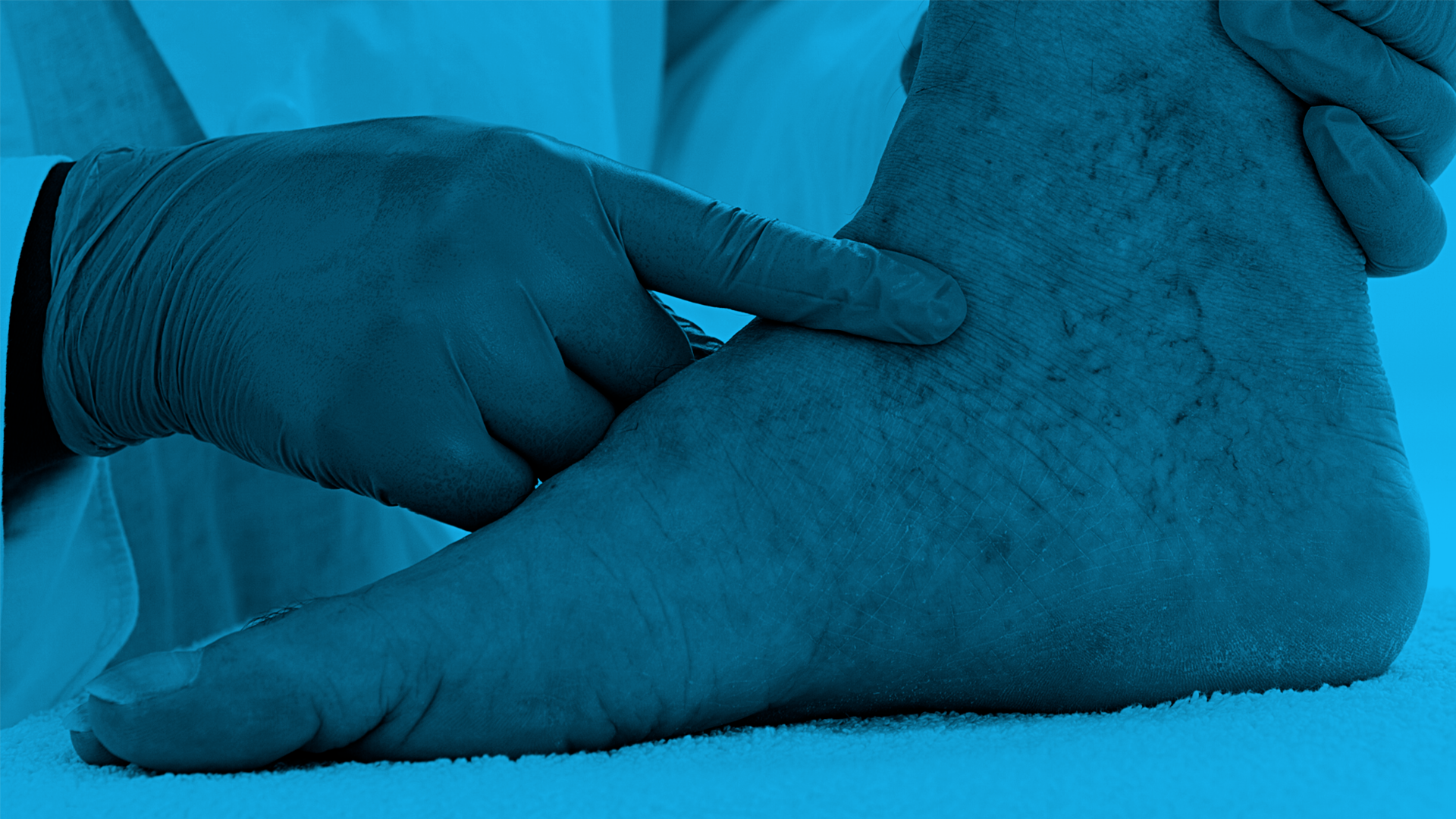

In this Q+A session with Professor Neil Piller, we recap on key insights from his podcast to expand on some of the more relevant points for podiatrists when it comes to lymphoedema detection and treatment.
Q: What is lymphoedema?
A: Lymphoedema is one of three types of edema. These being acute edema, chronic edema and lymphoedema. Lymphoedema is a failure of the lymphatic system.
Q: How can it develop?
A: After about 10 to 12 weeks of chronic edema, the continuing high load on the lymphatic system causes it to fail. This is then properly called ‘lymphoedema’. A failing lymphatic system means that the load on the system is greater than its transport capacity, to transport residual fluid and its contents. This can include a range of inflammatory mediators (lymphokines and cytokines) as well as higher levels of proteins and often adipogenic factors.
Q: What causes lymphoedema, particularly in the lower limbs?
A: There are many causes, with the main ones being surgery or radiotherapy in the groin area associated with the very necessary treatment of cancers in the skin and tissues of the legs (such as melanomas). Lymphoedema may also be associated with bowel, prostate or stomach cancers as surgery or radiotherapy in these areas will make lymphatic clearance from the legs more difficult which results in lymphatic system failure (as all lymph from the legs has to drain through the abdominal and thoracic areas to the left shoulder area!).
Aside from surgery and radiotherapy, another (sometimes underlying reason) for sometimes unexpected lymphoedema is that patients have a genetically determined malformation or insufficient lymphatics (generally called hypoplasia). Also often related to genetic issues, some people’s lymphatics just can’t pump as well as other people’s lymphatics; or some people’s lymphatics can’t generate enough pressure to move the lymph from the feet and legs through the abdominal and thoracic area. In these cases (and in those with normal healthy lymphatics) it doesn’t take much external pressure on a lymphatic pathway draining from the foot up through the knee to the groin to actually slow lymph flow (or even stop it) and give rise to lymphoedema.
An example of this may include a blockage associated with Deep Vein Thrombosis or a blockage associated with an external tumour around the lymphatics, or in the tissues. Sometimes it can be external pressure due to underwear or tight stretch jeans in the groin area, which may compromise drainage. Bloating can sometimes slow down lymphatic drainage, as can constipation simply because of the pressure in the abdominal area.
So we need to be thinking widely about the reasons for poor drainage and look at all areas between the swollen foot or leg and where the lymph again enters the vascular system as the junction of the subclavian and jugular veins near the left shoulder.
Q: What treatment or management interventions are possible when it comes to lymphoedema?
A: Generally, when you’re dealing with a lymphoedema or chronic situation, there are two treatment phases.
First is the intensive treatment phase, and the management phase then follows that intensive phase. It is in the management phase where the patient, the partner and the carer, in association with a good therapist, work closely together.
No matter what the phase, to get the best result there ideally needs to be team management and coordination. A podiatrist also needs to be cognisant of other factors which may be loading the lymphatic system such as hypertension, thyroid issues, vascular issues and so forth. That’s why a team and holistic care will get the best outcomes.
It’s not your job as a podiatrist to diagnose these other issues but rather, to draw their attention to the patient and request that perhaps they seek medical advice to help reduce their blood pressure or correct thyroid imbalances for example.
The factors leading into the intensive phase are absolutely critical. Only once the lymphoedema has been diagnosed (and we’ve got some objective information about that lymphoedema) do we begin this intensive phase. To give the best treatment, you need objective measurements about that lymphoedema; such as where it is, what has happened to the tissues, what has happened to the lymphatics, where it is working, where it isn’t working and so forth.
Those objective measures can be gained through strategies such as bioimpedance spectroscopy, tissue dielectric constants, fibrinometery, indurometry, ultrasound and so forth. These help to give you pictures and feelings about the fluid in the tissues, the fibre in the tissues, and the problems in the tissues.
I know you are probably thinking, ‘Well I don’t have this equipment or information’, but you can get an idea of the fluid presentation in the tissues by doing a pitting test – in the medial and lateral lower leg, the dorsum of the foot and compare sites between the legs. If pitting is present (and remember to push with the thumb for about 30 seconds to get the best indication of it) you then know there is fluid, and that it may be due to lymphatic failure (or heart or other issues).
If you don’t have a Fibrinometer or Indurometer then you can easily measure tissue fibrosis by using a simple test called the Stemmer Sign. For this, you grasp the skin between the thumb and forefinger and see if you can lift it up a little. If you can’t, then the Stemmer sign is said to be ‘positive’ and the skin is fibrous (as a general sign of longer standing lymphoedema). You can also do this test at the base of the toes, but it can be done anywhere! Once you have this information then we can target and sequence the treatments to develop the best intensive program, followed by the best management program for that patient.
While it is difficult to make lymphoedema go away completely, you can reduce the signs of it and all of the problems associated with the other comorbidities. We can make anyone’s lymphatic system work a little bit better by finding alternate pathways of drainage. For example, we can surgically create new pathways such as linking one functional lymphatic vessel with another functional lymphatic vessel somewhere else, or even with a functional vein to drain the fluid away. Sometimes a lymph node may be transposed from a healthy area to one where lymphatic drainage is poor.
Next month: Part 2: The role of the podiatrist in lymphedema management
Neil is a lymphologist and director of the Lymphoedema Clinical Research Unit at Flinders University, and he is a member of a number of Australian and international lymphoedema and lymphology groups and the Australasian College of Phlebology. He is editor of a range of International Lymphology journals and is patron of the Lymphoedema Association of Australia – a patient group. Neil invites you to submit any interesting case studies about lymphoedemas you come across to be considered in our lymphology journals! Neil is the editor of the ‘Journal of Lymphoedema (UK)’ and the Australasian Editor of ‘Lymphatic Research and Biology (USA)’.
Looking to get more involved?
The Australasian Lymphology Association (ALA) is the peak body for health practitioners who specialise in treating lymphoedema. The ALA oversees an accredited lymphoedema practitioner program for health professionals interested in specialising in lymphoedema treatment. Accredited lymphoedema practitioners are then eligible to be on the National Lymphoedema Practitioner Register. More information can be found on the ALA website.
© Copyright 2021 The Australian Podiatry Association
